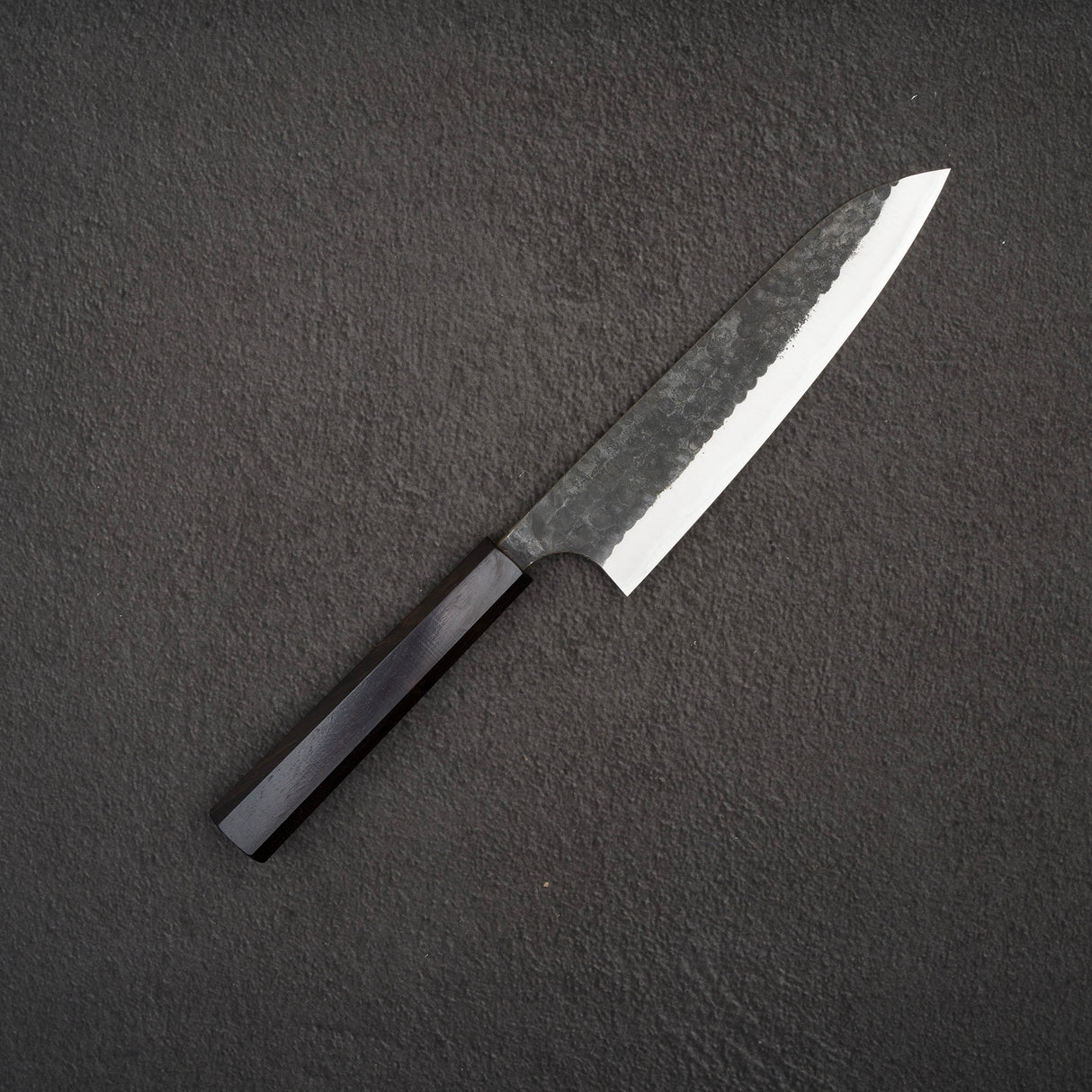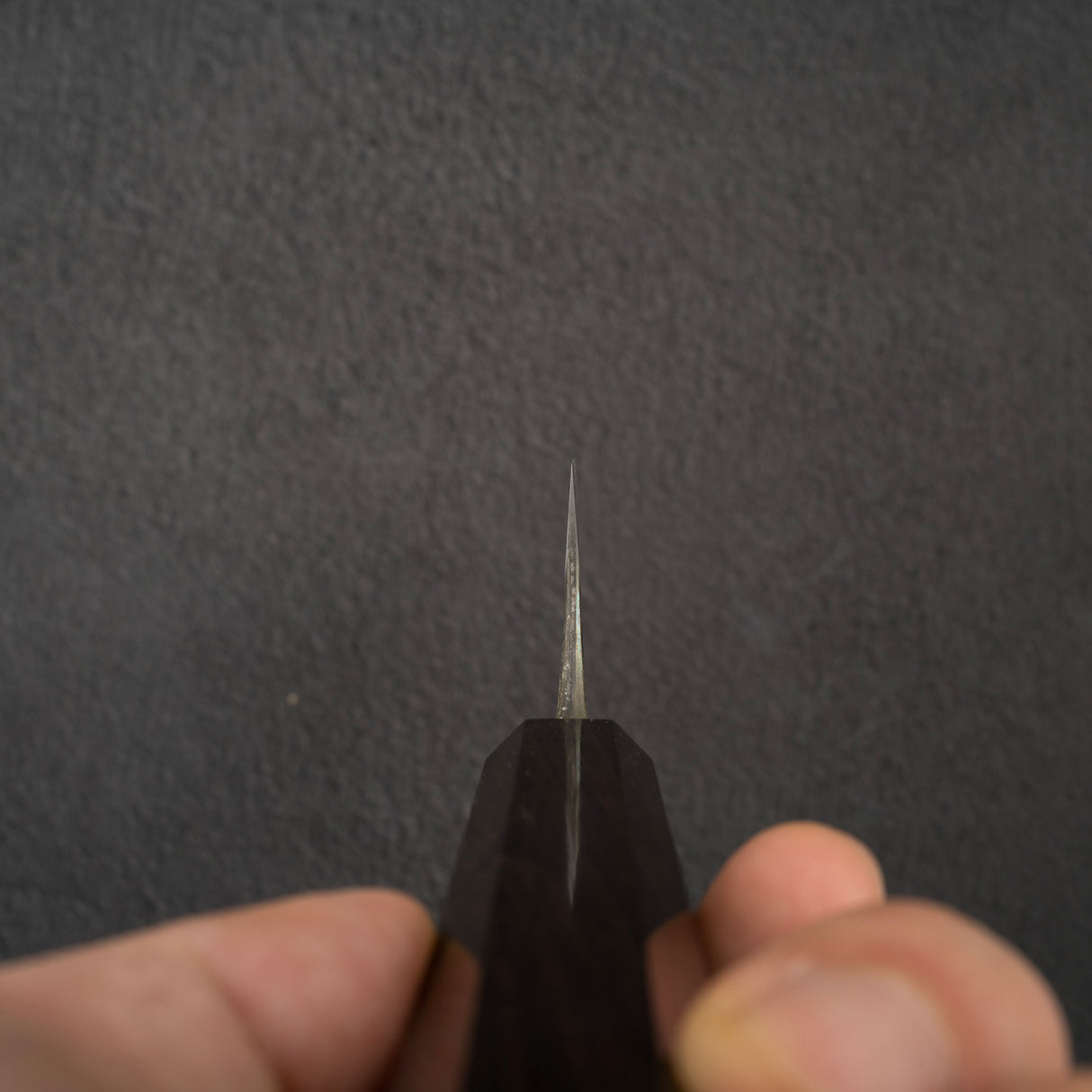Anryu Aogami Super Tsuchime Kurouchi Gyuto 180mm
Anryu Aogami Super Tsuchime Kurouchi Gyuto 180mm is backordered and will ship as soon as it is back in stock.
Couldn't load pickup availability
K&S Price: AU $299.95* inc. tax , vs:
| Store TC | AU $313.0 | -4.68% |
* For overseas buyers you pay no GST (10%) and low shipping rate.
Last Update: 2025-01-21T01:01:22Z
Detailed Specifications
| Line | Anryu Aogami Super Tsuchime Kurouchi |
| Profile | Gyuto / Chefs Knife |
| Bevel Type | Double Bevel |
| Weight | 160 g 5.64 oz |
| Edge Length | 183 mm .7.2 inch |
| Heel Height | 45 mm .1.77 inch |
| Width @ Spine | 4.0 mm 0.16 inch |
| Width @ Mid | 1.8 mm 0.07 inch |
| Width @ 1cm from Tip | 1.1 mm 0.04 inch |
| Steel | Blue Super / Aogami Super | Carbon |
| Blade Construction | Sanmai - Stainless Clad |
| Hardness (HRC) | 62 - 65 |
| Surface Finish | Kurouchi |
| Handle | Octagonal Black Chacate |
| Region | Echizen |
| Best for |
|

| Pros | Cons |
|
|
|
Care Instruction
- Don't cut hard things! Japanese knives are brittle so bone hacking is a NO NO!
- Wash with neutral detergent after use, and wipe dry;
- Please don't wash knife with dishwasher, it will damage the wood handle;
- Be careful not to leave the knife close to a heat source for a long time;
- It is a lot more dangerous to cut with a blunt knife than a sharp knife!
- It is best to sharpen a Japanese knife regularly on a waterstone.
- Oil the (carbon) knife if storing for an extended period of time to prevent rust.



















